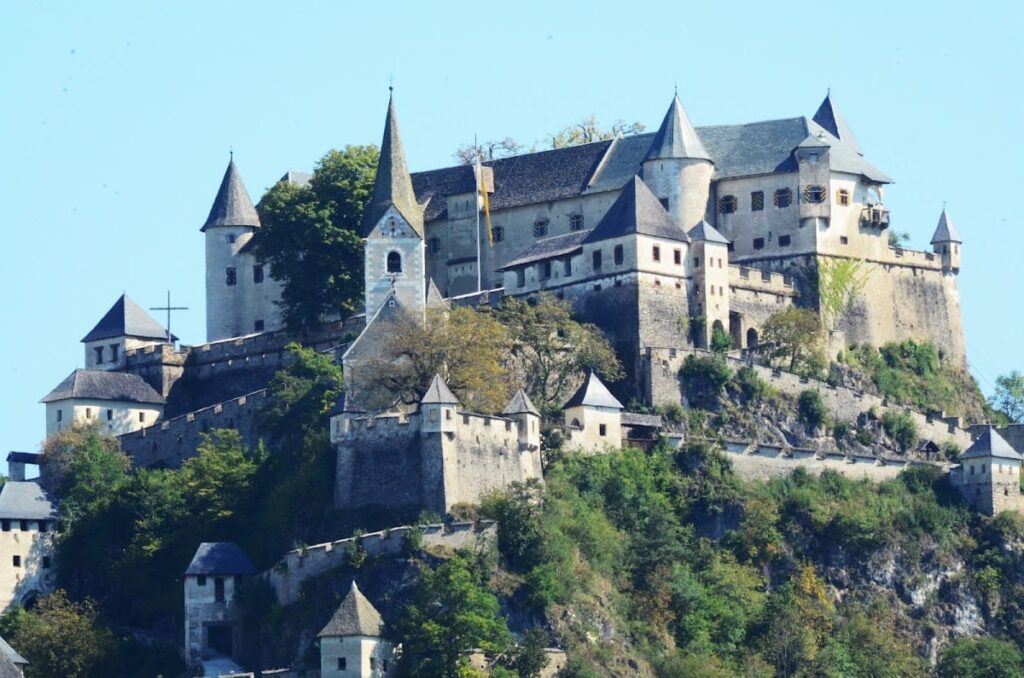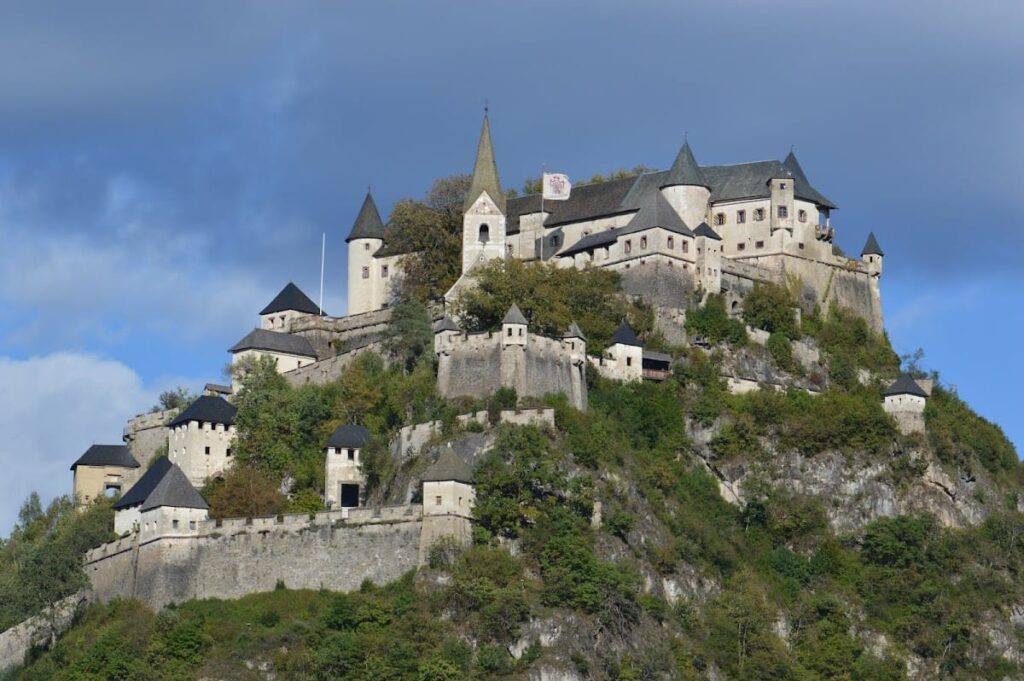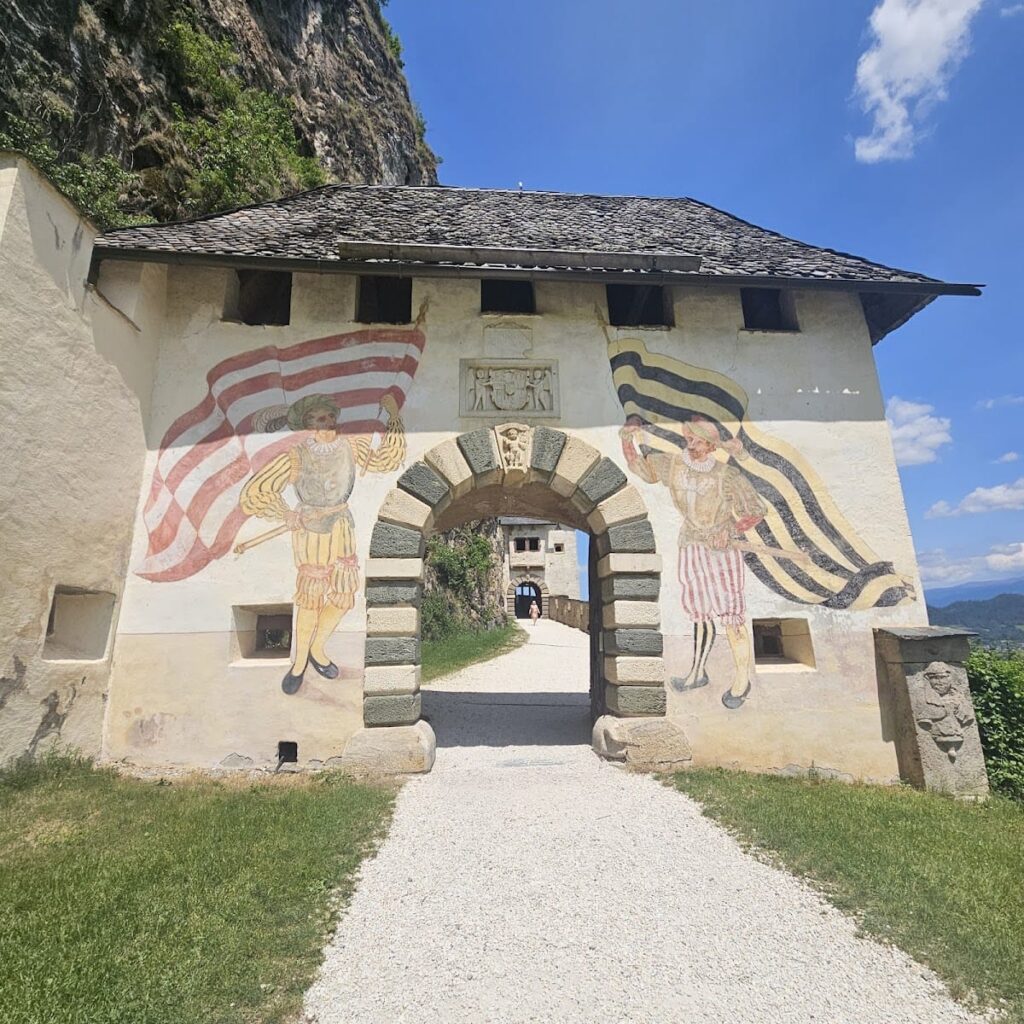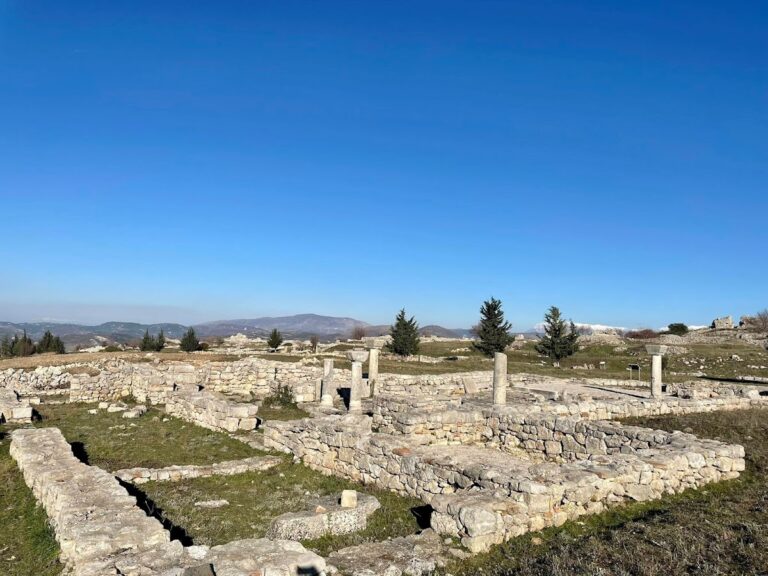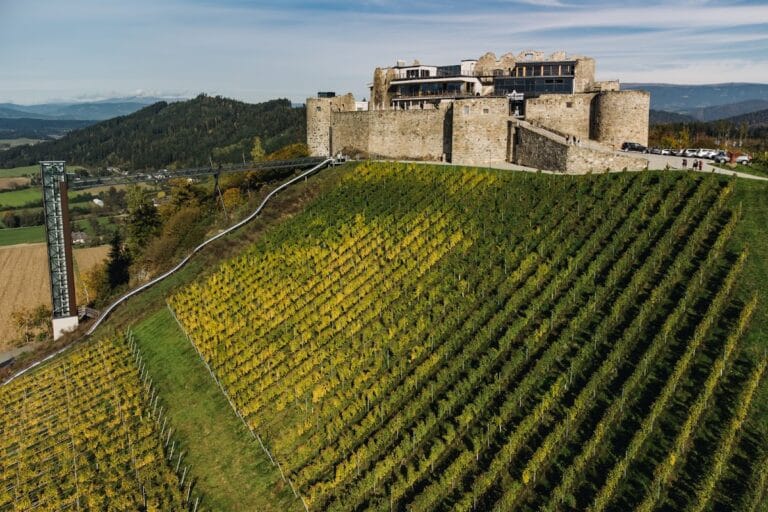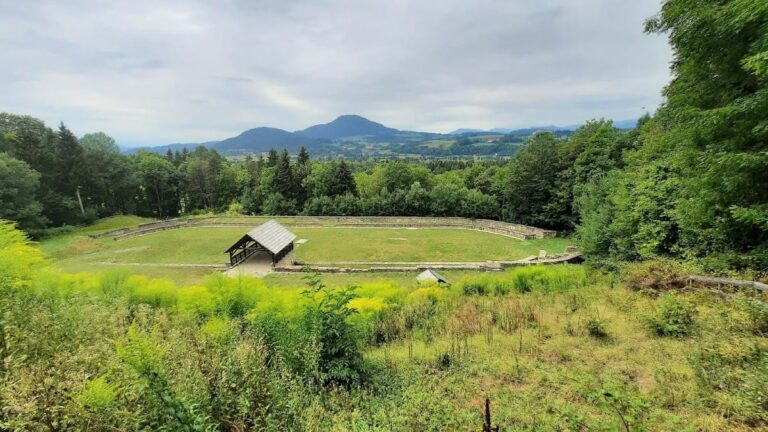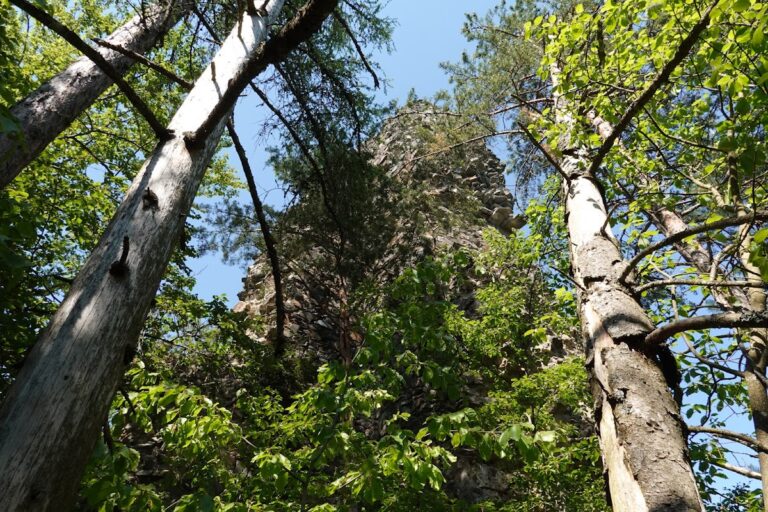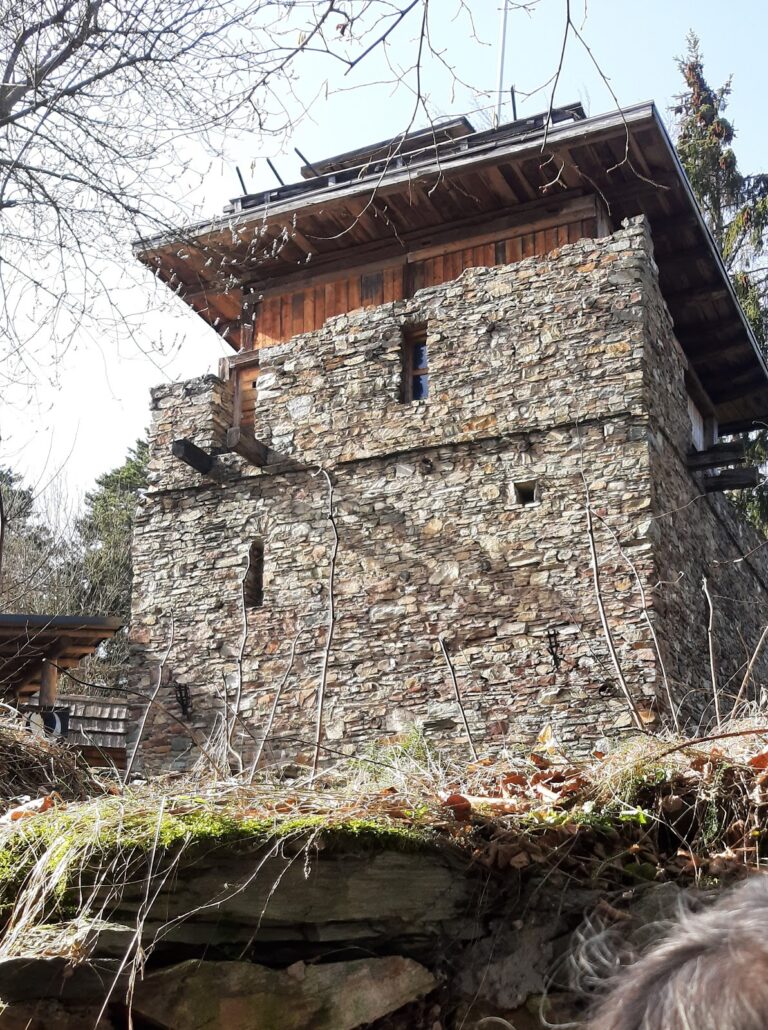Hochosterwitz Castle: A Historic Fortress in Austria
Visitor Information
Google Rating: 4.5
Popularity: Medium
Google Maps: View on Google Maps
Official Website: www.burg-hochosterwitz.com
Country: Austria
Civilization: Medieval European
Remains: Military
History
Hochosterwitz Castle stands on a hill in present-day Launsdorf, Austria, with evidence of settlement dating back to the early Bronze Age. Archaeological finds from the Hallstatt and La Tène cultures, as well as Roman artifacts, show the site was continuously inhabited long before the castle’s construction. The first written record of the castle appears in 860 AD under the name “Astarwizza,” a Slavic term reflecting the region’s early medieval population.
Initially, the castle belonged to the Archbishopric of Salzburg until the mid-1100s. Afterward, it was granted as a fief to the Schenken von Osterwitz family, who held it until 1478. This family served as hereditary cupbearers to the Dukes of Carinthia. Their decline began when Georg von Osterwitz was captured and died in Turkish captivity in 1475. Following this, Emperor Frederick III took possession of the castle in 1478.
In 1509, Emperor Maximilian I granted Hochosterwitz as a fief to Matthäus Lang von Wellenburg, then Bishop of Gurk and later Archbishop of Salzburg. Lang initiated expansions to the fortress, enhancing its defenses. From 1541, the castle was pledged and eventually bought in 1571 by Georg von Khevenhüller, the Carinthian governor. Between 1570 and 1583, he transformed the castle into a Renaissance fortress to resist Turkish invasions. The Khevenhüller family has maintained ownership ever since.
A well-known legend, though historically unlikely, tells of a siege by Countess Margaret of Tyrol. According to the story, the castle’s defenders cleverly outwitted her forces, preventing its capture. This tale remains part of the castle’s cultural heritage.
Until 1961, Hochosterwitz lacked its own water source. A steward later discovered a spring that now supplies the castle. In 1994, the site was proposed for UNESCO World Heritage status, recognizing its historical and architectural importance.
Remains
Hochosterwitz Castle is a hilltop fortress built on a dolomite rock rising about 160 to 175 meters above the surrounding land. The highest point reaches approximately 711 meters above sea level. The castle’s layout includes a fortified road that winds up the rock, passing through fourteen large defensive gates. Each gate features drawbridges and was designed to force attackers to face them one by one under defensive fire, making the fortress nearly impregnable.
The medieval core of the castle includes a square keep, known as a bergfried, residential buildings called the palas, and a small chapel dedicated to St. Nicholas. These structures date back to at least 1388. Protective walls with battlements and arrow slits surround this core. The gates and portals display mannerist architectural style, built from red sandstone and green chlorite schist. They are richly decorated with white limestone or marble reliefs, inscriptions, and heraldic symbols.
Inside the main courtyard stands a chestnut tree and a museum showcasing the Khevenhüller family’s history. Exhibits include armor, weapons, documents, and paintings. An inscription in the courtyard expresses the family’s wish to hold the castle forever and live virtuously. The St. Nicholas chapel features a barrel-vaulted ceiling painted with portraits of the apostles, a Baroque altar depicting the Holy Family, and a painted portal of the patron saint.
A 20-meter deep cistern collects rainwater for the castle’s use. Below the main fortress lies the church of St. John Nepomuk, accessible through the thirteenth gate. This church has an Italian-style portal adorned with busts of the twelve apostles and Christ. Its Baroque high altar honors its patron saint. Since 1607, it has served as the burial place for the princely Khevenhüller-Metsch family.
The defensive gates include the Fähnrichtor (Flag Bearers’ Gate, 1575), Wächtertor (Guard Gate, 1577), Nautor (Ship Gate, 1583), Engelstor (Angel Gate, renovated 1577), Löwentor (Lion Gate, 1577), Manntor (Men’s Gate, 1578), Khevenhüllertor (Khevenhüller Gate, 1582), Landschaftstor (Landscape Gate, 1570), Reisertor, Waffentor (Weapons Gate), Mauertor (Wall Gate), Brückentor (Bridge Gate), Kirchentor (Church Gate, 1579), and Kulmertor (Kulmer Gate, 1575). Many gates include advanced defensive features such as murder holes, arrow slits, iron-barred shutters, drawbridges with counterweights, and artillery positions.
The gates are often richly ornamented with marble reliefs, inscriptions, and heraldic emblems. Some depict Georg II von Khevenhüller in full armor alongside religious motifs. The castle’s elevated position offers wide views of nearby mountain ranges and valleys, enhancing its defensive role and presence.
Since 2017, a modern inclined elevator has replaced a former funicular. It covers 125 meters in length and overcomes nearly 100 meters in height with a steep slope, providing barrier-free access to the fortress.
